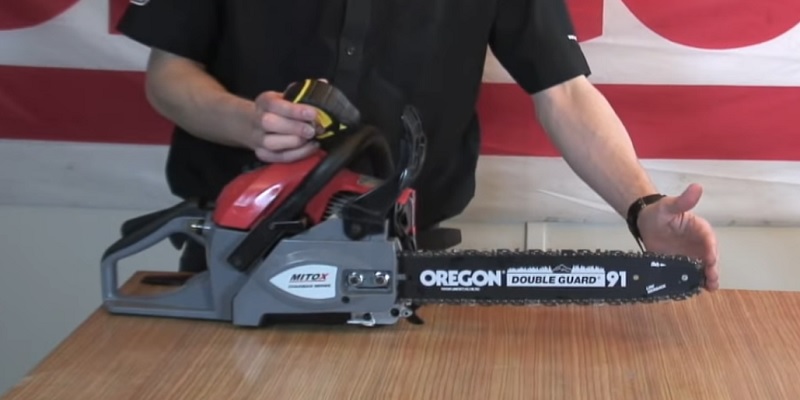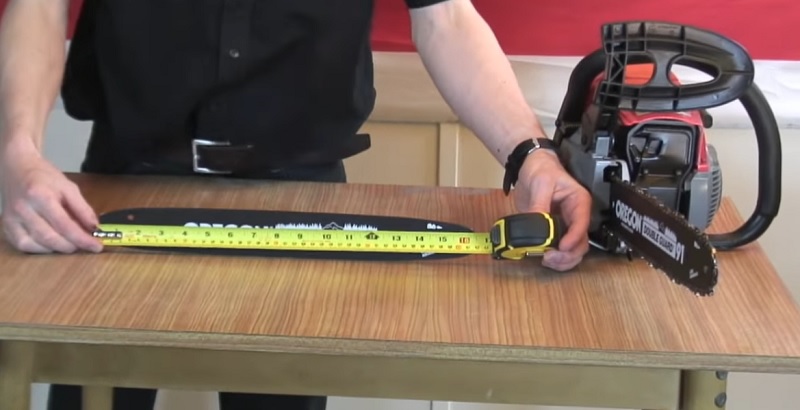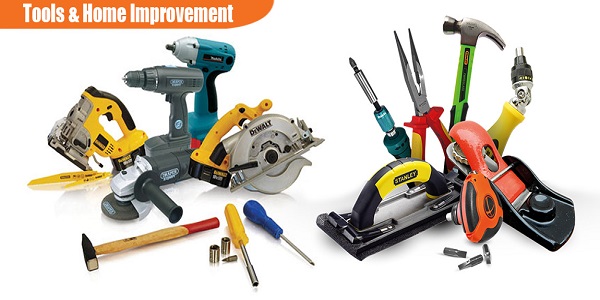To measure a chainsaw bar, follow a few simple steps. Begin by determining the length from the tip to where the bar enters the saw.
This gives you the bar’s usable length. Understanding chainsaw bar measurement is crucial for proper maintenance and replacement. The bar length affects cutting efficiency and safety. Knowing the correct size helps in selecting the right chain and ensures smooth operation.
Many chainsaw owners face confusion about measuring the bar accurately. This guide simplifies the process, helping you make informed decisions for your chainsaw. Whether you are a beginner or experienced user, learning this skill can enhance your tool’s performance. Dive in to explore easy steps, ensuring your chainsaw remains a reliable asset. Accurate measurement is just a few steps away. Let’s get started!

Choosing The Right Chainsaw Bar
Measuring a chainsaw bar is crucial for optimal performance and safety. Start by identifying the bar’s length from its tip to the base. Ensure the measurements match the manufacturer’s specifications for compatibility. Proper measurement guarantees efficient cutting and prolongs the chainsaw’s lifespan.
Choosing the right chainsaw bar can significantly impact your tool’s performance and longevity. Have you ever struggled with a chainsaw that just didn’t seem to cut right? Often, the issue lies with the bar, which is the guiding force behind every cut. Knowing how to measure and select the best bar for your chainsaw ensures smooth operation and efficient cutting.
Size Considerations
Size is a critical factor when selecting a chainsaw bar. It’s not just about the length but also how it matches the power of your chainsaw. A longer bar can reach higher branches or cut through thicker logs, but it requires a powerful engine to support it. Conversely, a shorter bar is easier to handle, making it ideal for lighter tasks and beginners. Consider what you’ll be cutting most often and choose a bar that aligns with those needs.
Material Selection
The material of your chainsaw bar affects both durability and performance. Steel bars are strong and can handle heavy-duty tasks, but they might be heavier. If weight is a concern, look for lighter alternatives like alloy or laminated bars. They provide a good balance of strength and ease of use. Reflect on how often you’ll be using your chainsaw and in what conditions to determine the best material for your bar.
Choosing the right chainsaw bar involves understanding these key aspects. Have you found a bar that perfectly suits your cutting needs? With the right size and material, you can enhance your chainsaw’s efficiency and make your cutting tasks far more enjoyable.
Tools Needed For Measurement
Measuring a chainsaw bar is a straightforward process. It requires some basic tools and precautions. Ensuring accuracy is key to proper maintenance and performance. Let’s explore the essential tools and safety gear needed for this task.
Essential Equipment
To measure a chainsaw bar, you’ll need a measuring tape. A flexible tape measure works best. It helps in getting precise measurements. A ruler can also be useful, especially for smaller sections. Keep a notepad handy for recording your measurements. This ensures you have a reference for future use.
Safety Gear
Safety should be your top priority. Wear gloves to protect your hands from sharp edges. Safety goggles are important too. They shield your eyes from any flying debris. Consider wearing a dust mask if you’re in a dusty environment. Proper footwear is essential. It offers protection from accidental drops or slips.
Steps To Measure Chainsaw Bar
Measuring a chainsaw bar accurately is essential for maintenance and replacement. This guide will walk you through the steps to measure your chainsaw bar efficiently. Understanding the correct measurement ensures compatibility with chainsaw chains and enhances performance.

Initial Preparations
Start by gathering necessary tools. You’ll need a measuring tape and a clean cloth. Ensure the chainsaw is turned off and unplugged. Safety is crucial, so wear protective gloves. Place the chainsaw on a stable surface for precise measurement.
Detailed Measurement Process
Begin by locating the base of the bar. This is where the bar enters the chainsaw body. Measure from the base to the tip of the bar. Use the tape measure, extending it along the bar’s length. Record the measurement in inches for accuracy.
Check the manufacturer’s specifications for the bar length. Compare your measurement to the specifications. Ensure the recorded length matches the listed size. This confirms compatibility with chainsaw chains and parts.
Consider measuring the full bar length. This includes the part embedded in the chainsaw body. This gives a complete overview of the bar size. Knowing the full length can aid in future replacements.
Common Mistakes To Avoid
Incorrect chain size can cause problems. Measure from the tip to the end where the bar enters the saw. Avoid skipping this step.
Measuring your chainsaw bar might seem straightforward, but it’s easy to make mistakes that can affect your cutting efficiency. Understanding these common errors will save you time and ensure your chainsaw performs optimally. Let’s dive into some pitfalls you should steer clear of.
Incorrect Measurements
Taking incorrect measurements is a frequent mistake. You might think you’ve got the right size, only to find it doesn’t match the replacement chain. Always measure from the front of the chainsaw to the tip of the bar. A tape measure works best for accuracy. Don’t just eyeball it or guess—it can lead to costly mistakes and wasted time.
Ignoring Safety Protocols
Safety should be your top priority. Many people overlook basic safety steps when measuring their chainsaw bar. Always ensure the chainsaw is turned off and the spark plug is removed to avoid accidental starts. Use gloves to protect your hands from sharp edges. Have you ever tried measuring with the chainsaw on? It’s risky and unnecessary. Safety protocols are there for a reason—don’t ignore them!
Avoid these mistakes, and you’ll find measuring your chainsaw bar is a breeze, keeping your tool in top shape and ready for action.
Tips For Accurate Measurement
To measure a chainsaw bar accurately, first ensure the chainsaw is off and cool. Use a tape measure from the tip of the bar to the base where it enters the chainsaw body. Record this length to determine the correct replacement size.
Accurately measuring your chainsaw bar is crucial for optimal performance and safety. Whether you’re replacing the chain or ensuring your tool functions efficiently, knowing the precise dimensions is essential. Precision in measurement can prevent costly mistakes and unnecessary stress. Have you ever found yourself frustrated because a replacement chain didn’t fit? Let’s delve into some practical tips to ensure you get it right every time.
Using Proper Techniques
Start by gathering the necessary tools: a measuring tape or ruler. Lay the chainsaw on a flat surface for stability. Measure from the tip of the bar to the point where it enters the chainsaw casing. This gives you the “called length,” which is often rounded up to the nearest inch.
Do not confuse the overall length with the cutting length. The cutting length is the part of the bar that cuts into the wood. Double-check your measurements to avoid any errors. A small mistake can lead to buying the wrong replacement part.
Regular Maintenance Checks
Regular checks ensure your chainsaw remains in peak condition. Conduct a visual inspection of the bar for any signs of wear or damage. Look for bends, cracks, or unusual wear patterns.
Cleaning the bar after each use can prevent build-up and prolong its lifespan. Use a brush to remove debris and a cloth to wipe it down. Regular maintenance not only ensures accurate measurements but also enhances safety and efficiency.
How often do you check your chainsaw’s condition? Doing so can save you time and money. Implementing these tips will keep your chainsaw running smoothly and extend its life. Remember, a well-maintained tool is a reliable tool.
Understanding Chainsaw Bar Numbers
Understanding chainsaw bar numbers is simple once you know what they mean. These numbers show important details that help you pick the right bar for your chainsaw. Let us explain what these numbers tell you.
As someone who’s worked with chainsaws for years, We’ve found that knowing how to read these numbers saves time and money. We once bought the wrong bar size and had to return to the store, wasting a whole day of work.
Bar numbers usually show three main things: the length, the pitch, and the gauge. The length tells you how far the bar extends. The pitch shows how close the chain links sit. The gauge tells you how thick the drive links are.
For example, a bar marked “16-3/8-.050” means it’s 16 inches long, with 3/8-inch pitch, and .050-inch gauge thickness.
Our best tip: write down your chainsaw’s bar numbers and keep them in your wallet. This small step has saved me countless trips back to the store.
Remember, using the wrong bar can damage your chainsaw or make it cut poorly. Always match the numbers exactly when you buy replacement parts.
Maintaining Your Chainsaw Bar
Maintaining your chainsaw bar is crucial for keeping your chainsaw running smoothly and efficiently. A well-maintained bar not only extends the lifespan of your chainsaw but also ensures safer operation.
You’ll find that dedicating a bit of time to routine maintenance can prevent unexpected issues and save you money in the long run. Here, we’ll explore practical ways to care for your chainsaw bar through routine cleaning and regular inspections.
Routine Cleaning
Cleaning your chainsaw bar should be a regular part of your maintenance routine. After each use, take a moment to wipe down the bar with a clean cloth. Remove any sawdust, dirt, or debris that may have accumulated. This simple step prevents buildup that can lead to rust and wear.
Consider using a soft brush to clean the grooves and oil holes. This ensures the chain moves smoothly and the bar stays lubricated. Have you ever noticed your chainsaw slowing down or binding? It might be due to a clogged bar. Keeping it clean helps avoid such issues.
Inspect the bar for any residue or oil buildup. Using a degreaser occasionally can help maintain optimal performance. Remember, a clean bar is a happy bar.
Read This Two Guide
Regular Inspections
Regular inspections are key to identifying potential issues before they become costly repairs. Start by checking the bar for any signs of wear or damage. Look for nicks, cracks, or bends that could affect the chainsaw’s performance.
Inspect the chain tension and alignment. A loose or misaligned chain can lead to accidents or damage. How often do you check yours? Make it a habit to inspect the chain before every use.
Finally, take a look at the bar rails. Ensure they are even and not worn down. Uneven rails can cause the chain to slip off or cut improperly. Regular inspection helps catch these problems early, keeping your chainsaw in top shape.
Maintaining your chainsaw bar doesn’t have to be a chore. With routine cleaning and regular inspections, you ensure your chainsaw is ready to tackle any job. Have you considered how a little maintenance can make a big difference? Try these tips and see the improvement for yourself!
Upgrading Your Chainsaw Bar
Easily upgrade your chainsaw bar by measuring it correctly. Find the bar length from the tip to where it enters the chainsaw. Knowing the right size ensures better performance and longevity.
Upgrading Your Chainsaw Bar
Upgrading your chainsaw bar can transform your cutting experience. A new bar can provide better performance, increased safety, and ease of use. But how do you know when it’s time to make this change?
When To Replace
You should replace your chainsaw bar if you notice obvious wear and tear. Bent bars, uneven cuts, or a chain that continuously slips off are clear indicators. Neglecting these signs can lead to inefficient cutting and potential safety hazards.
Regularly inspect your chainsaw bar for any damage. Look for cracks, warping, or deep grooves. If you’ve been using your chainsaw frequently, consider replacing the bar every couple of years.
Choosing A Suitable Upgrade
Selecting the right chainsaw bar depends on your specific needs. Consider the types of tasks you frequently perform. If you’re cutting larger trees, a longer bar may be necessary, while smaller tasks might require a lighter, shorter bar.
Ensure compatibility with your chainsaw model. Check the user manual or consult with the manufacturer if you’re unsure. Avoid the common mistake of assuming all bars fit all chainsaws.
Think about the material of the bar for durability. A high-quality steel bar can withstand heavy use and last longer. Is the slight increase in cost worth the peace of mind and enhanced performance?
Engage in conversations with fellow chainsaw users or professionals. They can offer valuable insights based on their experiences. What have they found most effective in their upgrades?
By carefully choosing when and how to upgrade your chainsaw bar, you enhance both safety and efficiency. Isn’t it worth investing time and thought into this crucial component of your chainsaw?
Frequently Asked Questions
How Do You Tell What Size Your Chainsaw Chain Is?
To determine chainsaw chain size, measure the pitch, gauge, and the number of drive links. Check the bar markings or owner’s manual for details. Use a ruler to measure pitch and gauge accurately. Ensure compatibility with your chainsaw model before purchasing a new chain.
How Do I Know What Bar My Chainsaw Is?
Check the chainsaw bar for engraved numbers indicating its length in inches or centimeters. You can also refer to the manufacturer’s manual or model specifications for accurate details. Measure the bar from the tip to where it enters the saw body to confirm the size.
Can I Put An 18 Inch Bar On A 16 Inch Chainsaw?
Yes, you can use an 18-inch bar on a 16-inch chainsaw, but it depends on the model. Check the manufacturer’s specifications to ensure compatibility and maintain performance. Using a larger bar may affect the chainsaw’s balance and cutting efficiency. Always prioritize safety and proper maintenance.
How To Tell Husqvarna Bar Length?
Measure from the chainsaw’s front to the tip of the bar. Ensure the chain is tensioned correctly. This length usually ranges from 12 to 24 inches. Refer to the user manual for specific details. Always use the correct bar length for optimal performance and safety.
Final Words
Measuring your chainsaw bar is simple with the right steps. Start by checking the length from the tip to the base. This ensures accurate measurements every time. Knowing the correct size helps in buying the right replacement bar. It also aids in effective maintenance.
Remember, safety comes first. Double-check your measurements. Use a ruler or tape measure for precision. Keeping your chainsaw in good shape boosts performance. Now, you can confidently measure your chainsaw bar. With practice, it gets easier. Enjoy a smoother and safer cutting experience.
Your chainsaw will thank you!


